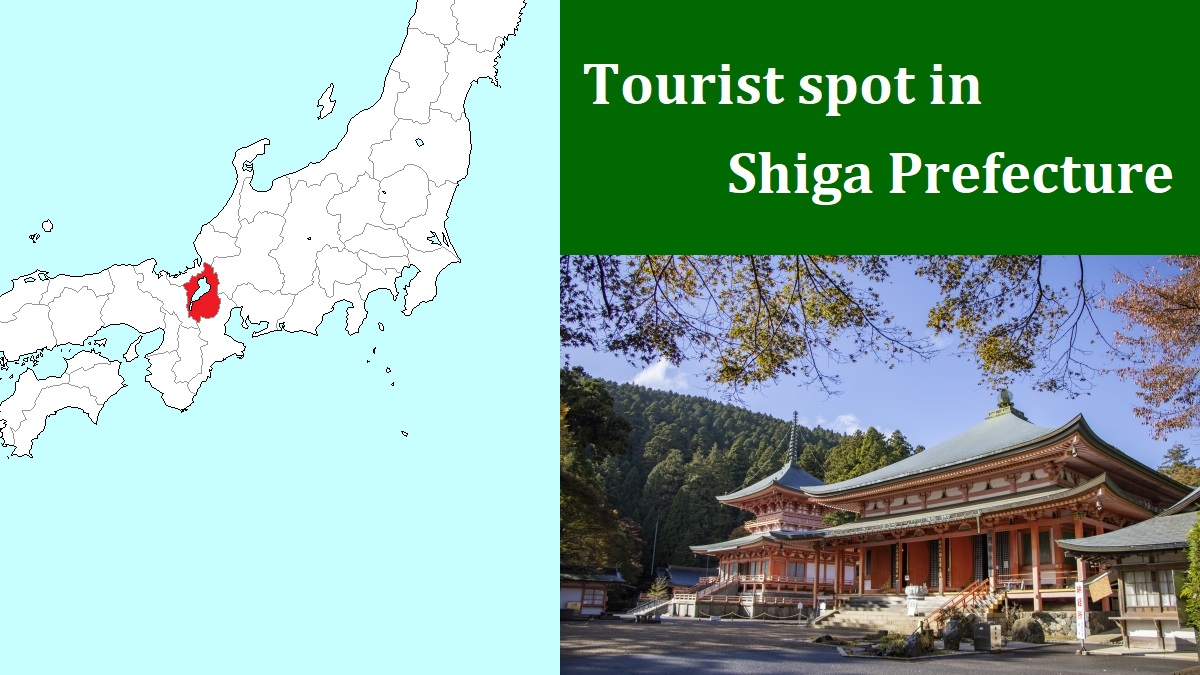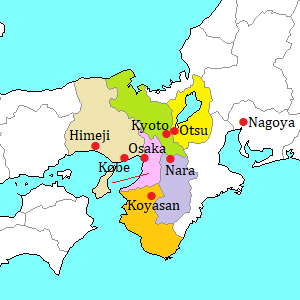Lake Biwa [琵琶湖]
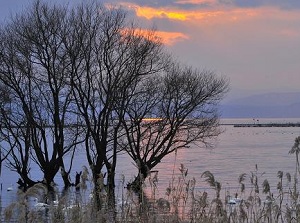
Lake Biwa
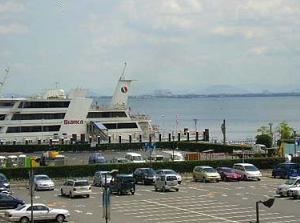
Otsu Port
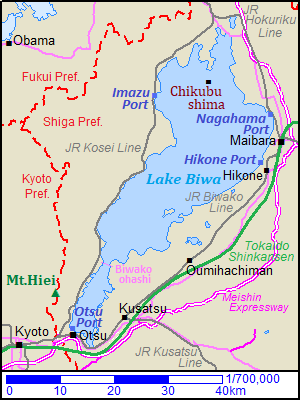
Lake Biwa is the largest lake in Japan, and is in the center of Shiga Prefecture.
It is called Biwako in Japanese.
It is a fresh-water lake, and has an area of about 670 square kilometers.
The lenght from north to south is about 80 km, and the length at the widest part from east to west is about 25 km.
The altitude of the surface of the lake is about 84 meters, and the deepest part in the lake is about 104 meters.
Lake Biwa is one of only about 20 "ancient lakes" in the world.
Lake Biwa was formed about 4 to 6 million years ago.
It is the third oldest ancient lake, after Lake Baikal (25 to 30 million years ago) in Russia and Lake Tanganyika (20 million years ago) in Africa.
Therefore, this lake has about 50 kinds of endemic fishes and water creatures.
It was designated as a UNESCO Ramsar Wetland in accordance with the Ramsar Convention.
But recently, non-native fishes have been increasing rapidly in Lake Biwa.
Endemic species are on the decline as they fall prey to non-native Black Bass and Bluegills.
As a result, the ecosystem in the lake has drastically changed.
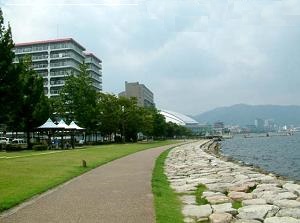
Lakeside in Otsu city
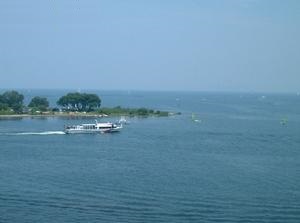
Cruising ship of Lake Biwa
More than 120 rivers flow into this lake, but the river flowing out from this lake is only Seta River.
It flows out at the southernmost point of the lake, flows through Uji city (The name changes to Uji River there.), flows through Osaka city (The name changes again to Yodo River.), and flows into Osaka Bay.
And Lake Biwa Canal was constructed in 1890 and 1912, and it has sent the water of Lake Biwa to Kyoto city.
We can see a part of the construction of the canal in the site of Nanzenji temple in Kyoto.
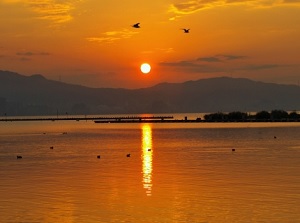
Sunset of Lake Biwa
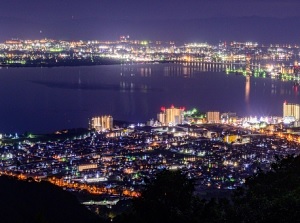
Night view of Otsu city
There are only five small islands in Lake Biwa.
The most popular island of them is Chikubushima island (竹生島).
To tour around Lake Biwa, some cruise ships are operated.
Otsu Port is near central Otsu city.
Otsu (大津) is the capital of the prefecture and is located at the southernmost edge of Lake Biwa.
The ships cruising around the south part of Lake Biwa leave from the port.
We can enjoy the cruising for 60 or 90 minutes.
And the cruising to Chikubushima and Nagahama in the northern part is operated between May and November.
It takes half a day one way, and it takes one day there and back.
To tour Chikubushima, the ships are operated from Hikone, Nagahama and Imazu.
It takes about 30 to 40 minutes one way.
In addition, there is Biwako Ohashi bridge about 13 km north of Otsu Port.
it is a toll bridge for car, and is only one bridge over the lake.
The cruising ships from Otsu Port pass under the bridge.
Chikubushima island (竹生島)
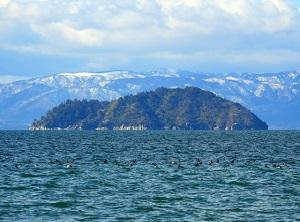
Chikubushima
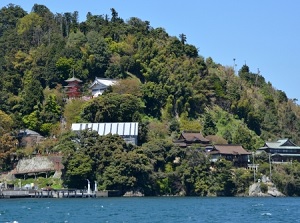
Hogonji & Tsukubusuma Shrine
Chikubushima is a small uninhabited island.
It is located about 2 km south of the northern coast of the lake, and about 12 km northwest of Nagahama Port.
The island is about 0.7 km from north to south and about 0.3 km in width.
But the highest point is over 110 meters from the surface of the lake, so the island is steep.
The whole island is covered with forest.
There is the deepest point of Lake Biwa to the west of this island.
Many ancient earthenwares were found in the bottom of the lake on the west side of the island, and it is unknown why such ancient ruin is there.
In the southeast part of island, there are Tsukubusuma Shrine (都久夫須麻神社)
It is also called Chikubushima Shrine, and it is said that the shrine was founded in the late 7th century.
Main shrine was rebuilt in 1567, and is designated as a national treasure.
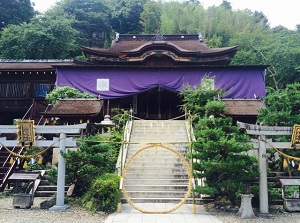
Tsukubusuma Shrine
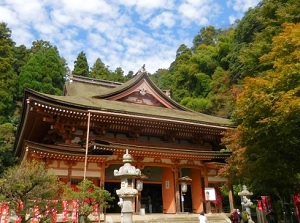
Main temple of Hogonji
There is Hogonji temple (宝厳寺) on the mountainside.
It is a temple of Shingon Buddhism and was founded in 724.
The main temple was rebuilt in 1942.
Karamon (唐門) is the main gate of the temple and was built in 1602.
It is also designated as a national treasure.
And Kannondo (観音堂) is by Karamon and is one of the building of Hogonji.
From Kannondo to Tsukubusuma Shrine, there is Funa corridor (船廊下).
It is a wooden corridor with roof, and it is said that it was built using the woods of a ship for Shogun.
How to get here
To Otsu Port
About 5 minutes by route bus, from JR Otsu station.
To JR Otsu, about 10 minutes by rapid or local train on JR Tokaido Line from Kyoto.
Or, get off Hama-Otsu station of Keishin Line of Keiha Railway.
It is connected with Tozai Line of Kyoto subway, so it takes about 20 to 25 minutes from central Kyoto.
To Hikone Port
About 10 minutes by free shuttle bus, from JR Hikone station.
To JR Hikone, about 5 minutes by rapid or local train on JR Tokaido Line from Maibara where some trains of Tokaido Shinkansen stop.
To Nagahama Port
About 10 minutes walk, from JR Nagahama station.
To JR Nagahama, about 9 minutes by rapid or local train on JR Hokuriku Line from Maibara.
To Imazu Port
About 5 minutes walk, from JR Oumi-Imazu station.
To JR Oumi-Imazu, about 50 to 65 minutes by rapid or local train on JR Kosei Line from Kyoto.

